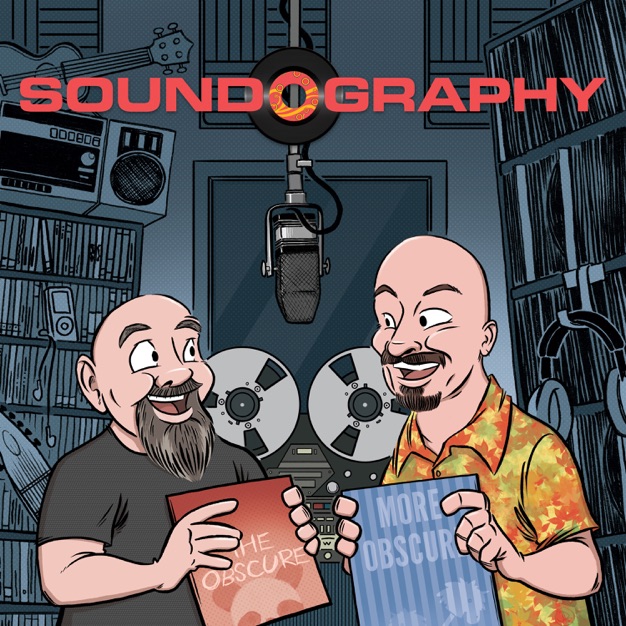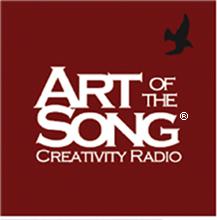
Lyrics Undercover
Brian Ibbott, Denver Post
A weekly show that explores the meanings and inspirations behind the lyrics of popular music.
- Lyrics Undercover #353: “The Unknown Soldier” – The Doors
From this episode…
“If the doors of perception were cleansed, everything would appear to man as it is: infinite” – This line from William Blake’s “The Marriage of Heaven and Hell” inspired the title of Aldous Huxley’s book “The Doors of Perception”, which in turn inspired a young UCLA Film School student named James Douglas Morrison to name the band he was forming with his then mere-acquaintance Ray Manzarek, ‘The Doors’. And the rest, they say, is history. Although it is much more than that, because The Doors quite literally MADE history.Note: this is a Premium episode. To get this show and future shows on the Premium feed, sign up for a monthly or annual subscription today!
Subscribe Today!11 April 2017, 2:26 pm - Lyrics Undercover 352: “Country Roads” – John Denver
From this episode…
John Denver’s ‘Country Roads’ hit number 2 on the Billboard Hot 100 when it was released in 1971. It is one of Denver’s most popular songs. It is now the student-adopted theme song for West Virginia University. It was written by Denver’s friends Bill and Taffy Danoff, and the song almost wasn’t made.Click to listen
http://www.lyricsundercover.com/audio/LU-352.mp3Like what you hear? To get this show and all shows on the Premium feed, sign up for a monthly or annual subscription today!
Subscribe Today!5 April 2017, 1:40 pm - Lyrics Undercover 351: “Billie Jean” – Michael Jackson
From this episode…
Based on an actual situation of a woman stalking him with letters and claims of a son that was his, Billie Jean was written as a creative outlet for the stress Michael Jackson was experiencing as his stardom was continuously on the rise. Jackson did not handle the unwanted attention well and as a result started to become more and more reclusive.Note: this is a Premium episode. To get this show and future shows on the Premium feed, sign up for a monthly or annual subscription today!
Subscribe Today!17 February 2017, 3:28 pm - Lyrics Undercover 350: “Poetry Man” – Phoebe Snow
From this episode…
Phoebe Snow is a folk singer and guitarist, who was described by the New York Times as an ‘contralto grounded in a bluesy growl and capable of sweeping over four octaves.’ Her first charting hit – ‘Poetry Man’ – hit #5 on the Billboard Hot 100 in April of 1975, securing a Grammy nomination for Best New Artist and opening up for her great touring prospects.Note: this is a Premium episode. To get this show and future shows on the Premium feed, sign up for a monthly or annual subscription today!
Subscribe Today!30 January 2017, 9:34 pm - Lyrics Undercover 349: “Lucky Man” – Emerson, Lake and Palmer
From this episode…
What is probably the best known song of the band Emerson, Lake and Palmer, ‘Lucky Man’ contains one of the most influential and early uses of the Moog Synthesizer. This song almost didn’t happen, on the last day of recording their first album, the group did not have enough material to finish the minimum content required by their contract. In a last ditch effort, Greg Lake brought up this song to bring the total side B time on the LP to 21 minutes.Click to listen
http://www.lyricsundercover.com/audio/LU-349.mp3Like what you hear? To get this show and all shows on the Premium feed, sign up for a monthly or annual subscription today!
Subscribe Today!2 January 2017, 7:40 pm - Lyrics Undercover 348: “San Francisco (Be Sure To Wear Some Flowers In Your Hair)” – Scott McKenzie
From this episode…
A song that embodies the spirit of peace, love, and the Hippy culture of the 1960’s is Scott McKenzie’s “San Francisco (Be Sure To Wear Some Flowers In Your Hair).” The track, helped by its release date of May 1967, was widely adopted by Hippies and peace activists during the iconic Summer of Love, wearing flowers in their hair.Note: this is a Premium episode. To get this show and future shows on the Premium feed, sign up for a monthly or annual subscription today!
Subscribe Today!20 December 2016, 3:44 pm - Lyrics Undercover 347: “Safety Dance” – Men Without Hats
From this episode…
In 1977, three men in Montreal believed so strongly in style before comfort, that they refused to wear hats, even in the dead of the Canadian winter. They also believed that electronic music should be something you can actually dance to – a core facet of electronic music today, but not then. The late 1970’s had seen an eruption of new wave music known as Synth Pop, containing synthesizers and keyboards over the traditional guitar and drums. Forming a band aptly called Men Without Hats, the three brothers – Ivan, Colin, and Stefan Doroschuk, joined by drummer Allan McCarthy – would rebel against the conformity of mainstream musical concepts to produce the iconic song, ‘Safety Dance’.Note: this is a Premium episode. To get this show and future shows on the Premium feed, sign up for a monthly or annual subscription today!
Subscribe Today!12 December 2016, 10:01 pm - Lyrics Undercover 346: “Million Dollar Loan” – Death Cab For Cutie
From this episode…
Born on the heels of the Grunge explosion, Death Cab For Cutie was formed in the town of Bellingham Washington in 1997. Originally a solo project for frontman Ben Gibbard, Death Cab – as it is often called – is an Alt Rock band with a deep musical sound. Each studio album by the band is a rich tapestry of music accompanying often very poignant and sometimes dark lyrical arrangements. Gibbard is an outspoken man and an activist for various causes, such as gay rights – and it is very common to find those themes running throughout their music. The band recently joined a political activist musician coalition called 30 Songs 30 Days in which a different group or artist made a song for each day leading up to the American Presidential Elections. Theirs was the very first track, titled ‘Million Dollar Loan’Click to listen
http://www.lyricsundercover.com/audio/LU-346.mp3Like what you hear? To get this show and all shows on the Premium feed, sign up for a monthly or annual subscription today!
Subscribe Today!8 November 2016, 2:51 pm - Lyrics Undercover 345: “La Bamba” – Richie Valens
From this episode…
Born Richard Steven Valenzuela in one of the oldest neighborhoods in Los Angeles, Ritchie Valens was a Mexican-American musician who, at the age of 17, became a Rock and Roll icon for his original songs, but largely for the incredible success of a spanish language dance/rock arrangement of a traditional folk song. Based on a classic Son Jarocho style tune from Veracruz, it traditionally blended the indigenous sounds with Spanish and African musical instruments. La Bamba has had many reincarnations from its historical origins, but none more recognizable than the 1958 Valens recording.Note: this is a Premium episode. To get this show and future shows on the Premium feed, sign up for a monthly or annual subscription today!
Subscribe Today!28 October 2016, 10:30 pm - Lyrics Undercover 344: “Chandelier” – Sia
From this episode…
The Australian Singer/Songwriter was born Sia Kate Isobelle Furler, but to the world she is known simply as Sia. Her visage to the mainstream is of a mostly covered face in a black and white bob wig, however this was not always the case, and there is much to the story of why she dons the wig today.Click to listen
http://www.lyricsundercover.com/audio/LU-344.mp3Like what you hear? To get this show and all shows on the Premium feed, sign up for a monthly or annual subscription today!
Subscribe Today!7 October 2016, 4:51 pm - More Episodes? Get the App
Your feedback is valuable to us. Should you encounter any bugs, glitches, lack of functionality or other problems, please email us on [email protected] or join Moon.FM Telegram Group where you can talk directly to the dev team who are happy to answer any queries.
 Soundography | A Crash Course in Music, One Band at a Time!
Soundography | A Crash Course in Music, One Band at a Time!
 Songwriter's Toolbox
Songwriter's Toolbox
 The FrogPants Studios Ultra Feed!
The FrogPants Studios Ultra Feed!
 Coverville: The Cover Music Show (AAC Edition)
Coverville: The Cover Music Show (AAC Edition)
 Songcraft: Spotlight on Songwriters
Songcraft: Spotlight on Songwriters
 Song Talk Radio | Songwriting Tips | Lyrics | Arranging | Live Feedback
Song Talk Radio | Songwriting Tips | Lyrics | Arranging | Live Feedback